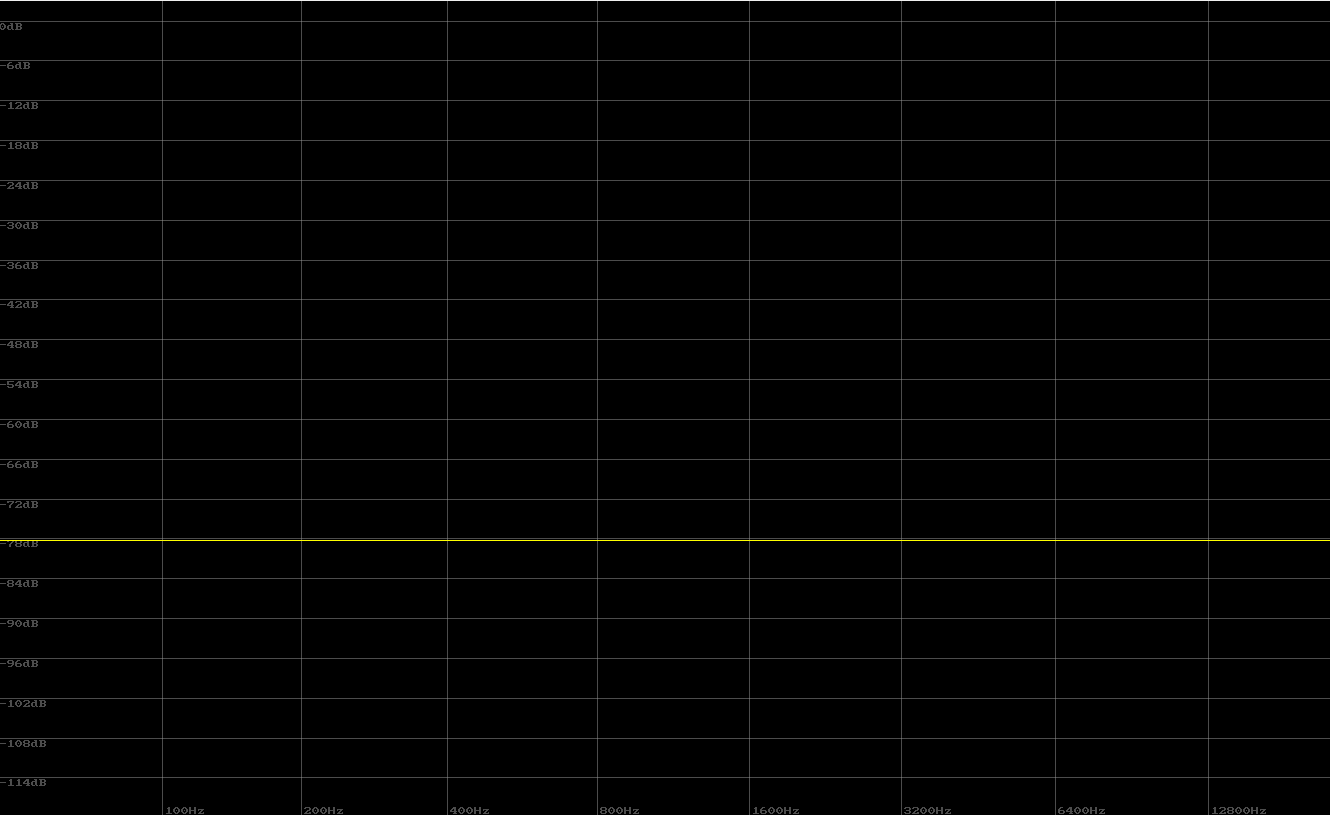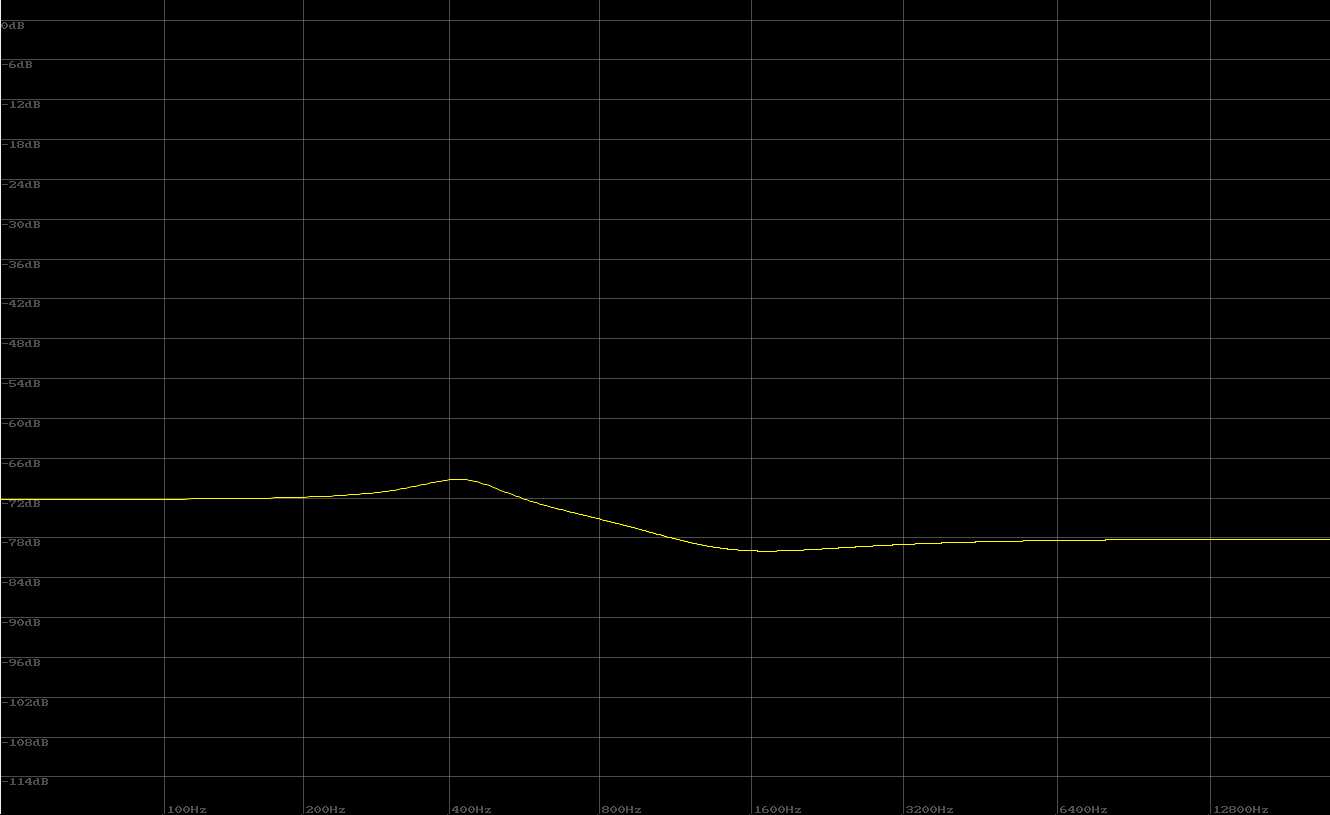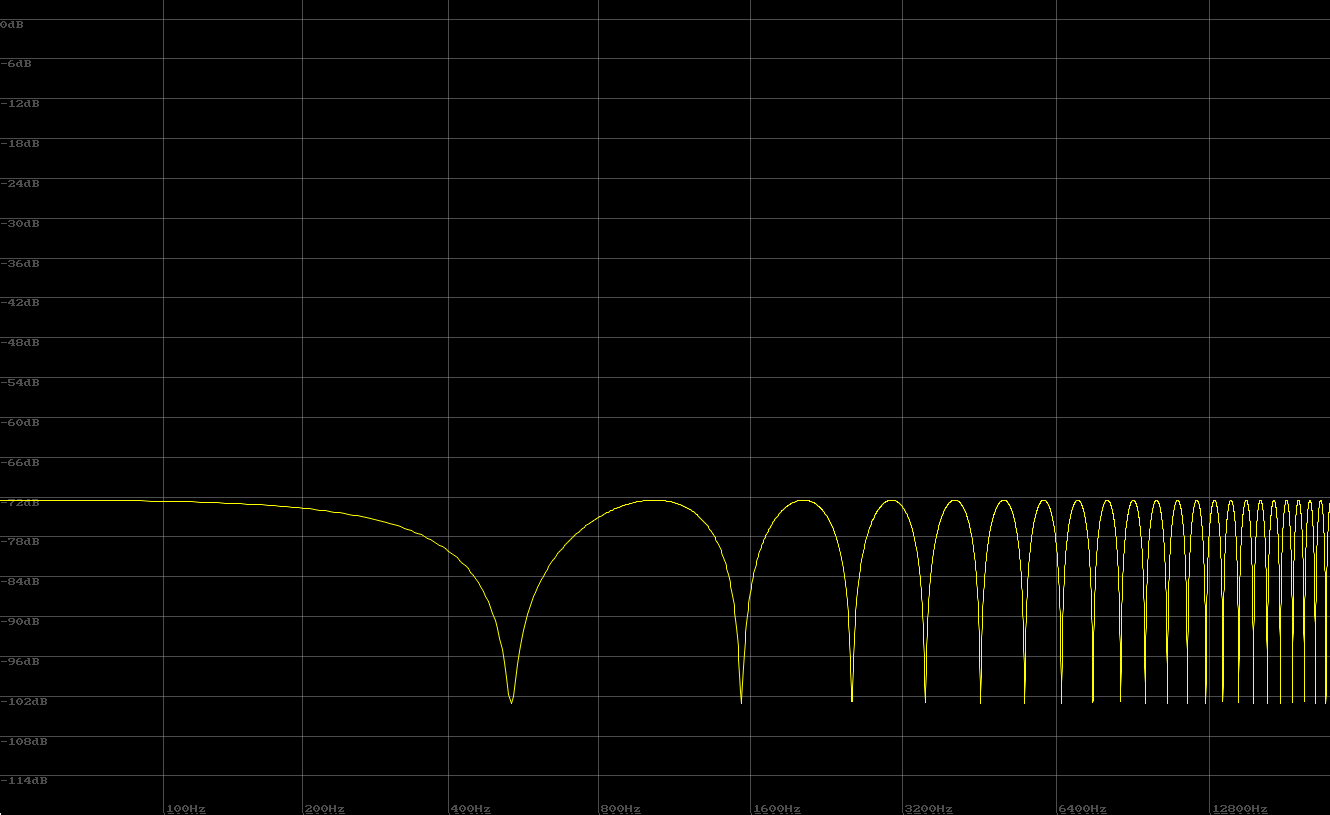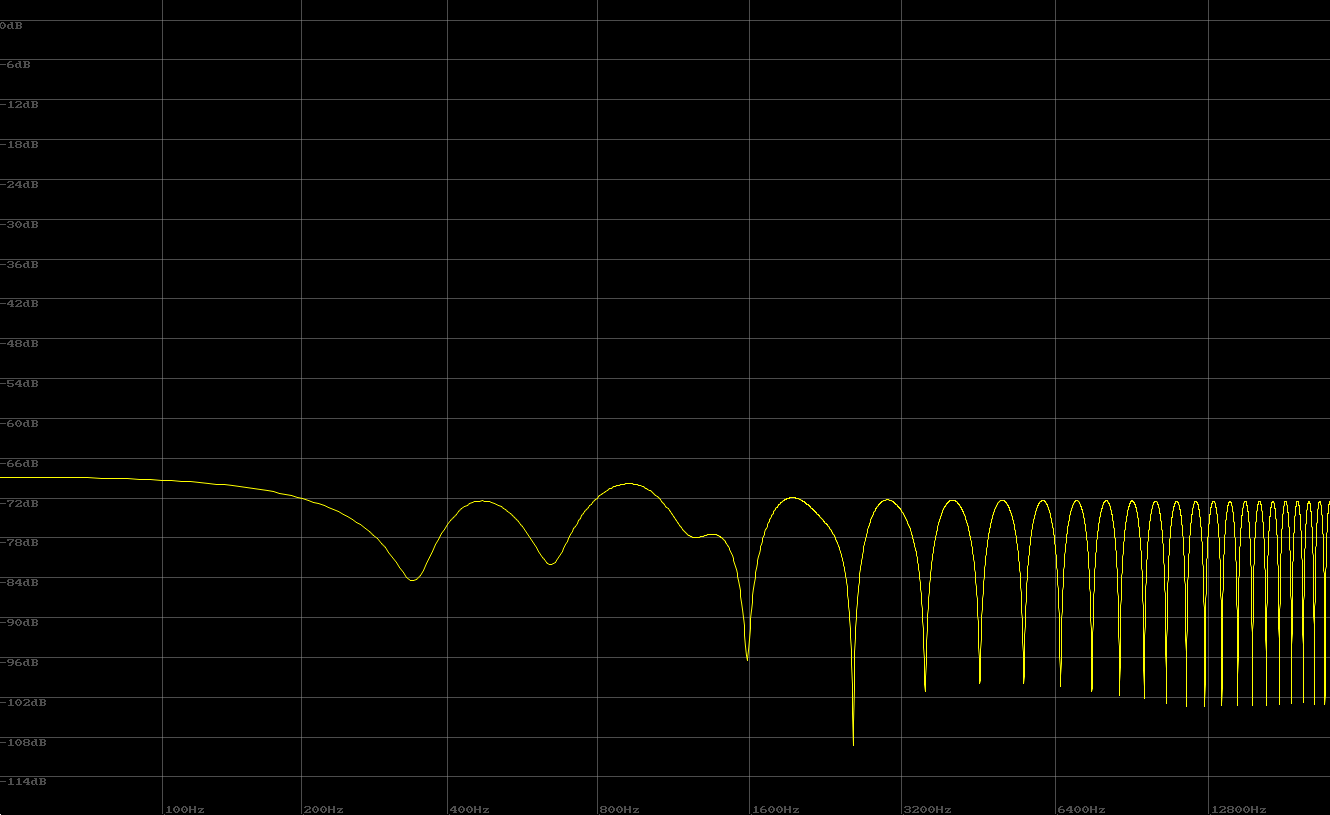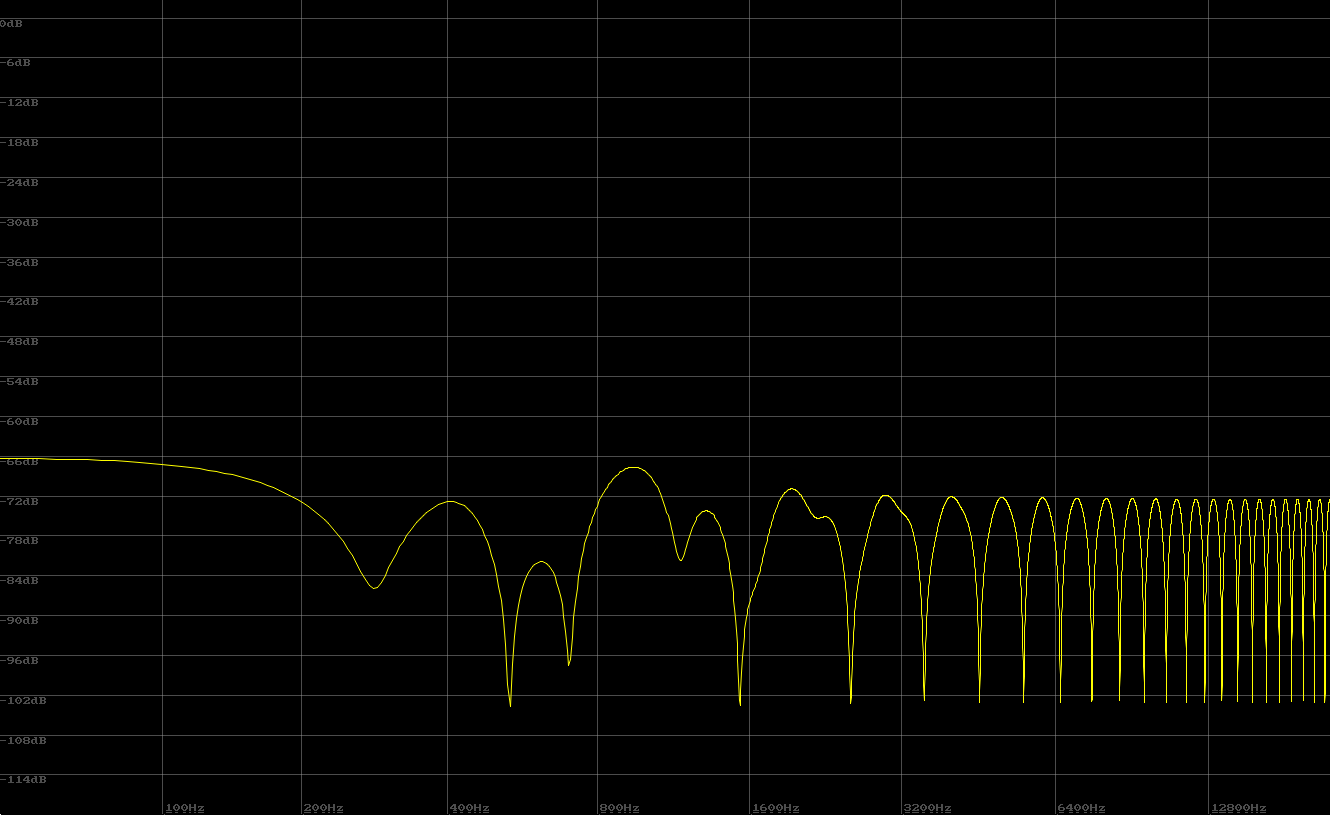More speakers will get louder, but they won’t necessarily sound better.
Please Remember:
The opinions expressed are mine only. These opinions do not necessarily reflect anybody else’s opinions. I do not own, operate, manage, or represent any band, venue, or company that I talk about, unless explicitly noted.

 Want to use this image for something else? Great! Click it for the link to a high-res or resolution-independent version.
Want to use this image for something else? Great! Click it for the link to a high-res or resolution-independent version.I once helped out with a children’s concert.
Don’t laugh – it was pretty cool. The performer was a real pro, and very gracious. There were plenty of (knowledgeable!) volunteers around to lend a hand, and the space we were in was pretty darn classy.
The PA was, surprisingly, not so nice. That it was not so nice was a bit weird, because the loudspeakers deployed were significantly more spendy than what I would personally have on hand. The thing was, though, that no matter what I did at the console, the sound of the show just wouldn’t clear up. The vocals, in particular, vexed me. They didn’t sound awful, but they weren’t nearly as intelligible as I would have liked.
(The thing with shows for kids is that the lyrics are even MORE really important than at other kinds of productions.)
The loudspeakers in the room were deployed such that an “inner” pair covered the central seating, and an outer pair covered some additional audience wings to the sides. At one point, I discovered that I could mute the outer pair.
Instantly, the show sounded a lot better. It was not subtle at all. The un-tameable mud basically went away.
And then, with a mental sigh, I unmuted the outfills. I knew that it was inevitable that someone would sit there, and they would want to hear some coverage from those boxes. There are many situations where “coverage” gets just as many votes as “quality,” and this was one of them. I couldn’t ask the organizers to rope off those sections, especially as I had no idea of the expected attendance, and I was also going to have to hand off the console to the house crew for the actual show. As I said, the volunteer team was knowledgeable, but I’ll also add that there were some communication barriers…not the least of which being that we had “a lot of cooks” in the kitchen. I couldn’t just make a decision, say, “this is how it’s going to be,” and expect everybody else to do my bidding.
Anyway…
The real problem was that the owners of the room had “piled up” (or had let someone else pile up) a bunch of PA in order to solve a coverage problem. To be fair, it could have been a LOT worse. The outfills were at least decently splayed away from the inner pair of boxes, and that helped, but the harsh reality remained: The system sounded better overall when half of it was muted.
More PA is not necessarily better. More PA will get louder, and sometimes you need that. More PA can cover a wider area, and sometimes you need that. At the same time, though, more PA can cause you some real sonic problems.
Tickets To The Splatterfest
You may remember me talking about how I dislike “AV” systems that just throw a bunch of sound everywhere. You may also remember an article I wrote about how acoustics really do matter, and that EQ can’t actually fix acoustical problems.
One problem with more PA and more coverage is that, unless you’re very careful, you end up making your acoustical problems worse.
In live audio, one of our greatest enemies is indirect sound. Indirect sound is the collection of sonic events that have traveled to a listener AFTER hitting something else, like a wall, ceiling, or floor. Direct sound, on the other hand, goes straight from the loudspeaker to the observer.
At this point, you might be wondering what I’m upset about. By adding more PA, you’re hitting more audience members with direct sound, right? Well – think about it for a minute. Yes, you are getting more direct sound to a section of the audience, but in a significantly reverberant room, you are also producing more reflections that are very definitely audible to everybody else. For a few people, the solution may be a bit better, but to most of the audience the solution is actually worse. It’s even more garbled and smeared than it was before.
When you started, the average audience member might have been hearing direct sound and, maybe, five secondary arrivals. Now, they’re getting something like ten or fifteen secondaries (or whatever, I’m just guessing), which are starting to swamp the direct acoustical signal. Uh-oh…
A Dearth Of Directivity
Another bit of trouble that us small-venue types run into is that our loudspeakers aren’t really meant to “array.”
There are loudspeakers in this world that are meant to be “piled up.” They’re designed for it. They have high directivity, meaning that a lot of effort has been put into getting the box to radiate a great deal of output into certain horizontal and vertical angles, with a lot less output spilling outside of those areas.
To my knowledge, actual, perfect directivity is impossible. With lower frequencies, getting “perfect” directional control requires enormous, and enormously impractical physical size.
Even so, some boxes are far more directional than others. Most of the enclosures that folks like me encounter are very NOT directional. They’re made for a market that requires system simplicity and compactness, with wide coverage from a small number of boxes. These not-super-directional loudspeakers make it easy to hit a wide swath of listeners, but all the “spray” makes it hard to MISS things. Like room boundaries.
Also, remember what I said about lower frequencies requiring large physical size for pattern control. These little boxes that we use become more and more omnidirectional as the frequency of our program material drops, which means the LF “garble” is going everywhere. That low frequency information goes pinballing throughout the room, and it also finds a direct path to other listeners. That unintended direct information combines with the intended direct information of other boxes, and it also sums with all the indirect information, and all this can quickly turn into a giant ball of muddy woof and boom.
Let me show you:
Let’s say you have the most amazing, wide-coverage loudspeaker ever invented. On-axis, its transfer function is perfectly flat.
Sweet! But now, you put another of that box into operation, firing off to the side. The top end is rolled off, and the room acoustics build a peak at around 400 Hz.
Now you add another one. (By the way – what I’m showing you is likely to be far more tame than what you would actually get in real life.)
The weirdness buildup collects in a BIG hurry. If you’re getting the idea that this kind of thing would very quickly become tough to manage, even with a decent EQ, you’re quite right – and remember that EQ can’t fix your multiple arrivals problem.
Running Interference
Another wrinkle to get under your toenails is the problem of time. The direct sounds from the various boxes that are being fired into the room don’t all arrive at each listener at the same instant. If all those boxes are reproducing the same signal, the interference caused can be on the order of “astounding.”
For instance, let’s say you have a pair of those super-perfect loudspeakers. Stand between them so that the sounds from both boxes arrive at exactly the same time, and the boxes sum with beautiful coherence.
…and then, you move so that one box arrives 1 ms later than the other. The box you’re nearer to is a bit louder than the “late” enclosure, but that isn’t enough to fix what happens:
Then, you add a pair of outfills. One of them arrives 2 ms later than the reference box, is rolled off, and has the bump at 400 Hz.
The other one is 3 ms late.
Every box that gets added is making things worse, not better.
Now, what I don’t want to do is to sound an unneeded alarm. In the theoretical case, yes, the very best “in the room” PA system is a single, perfect box that can cover every audience member. The theoretically perfect case, of course, isn’t going to come along anytime soon. We use “spaced pairs” of boxes all the time for a very good reason: The extra overall coverage and power is what we need, and we can manage the imperfections in various ways. Also, it’s important to remember that multiple boxes can be used successfully as part of a holistic solution. They have to have the right directivity, have the right EQ applied, be pointed in the right direction, and be used in an acoustic space such that all factors together result in each audience member hearing predominantly one box over all the others. Big shows use multi-box setups that are planned and executed carefully. The systems are designed to array in one fashion or another – some even being crafted such that the box-to-box interference gets a desired result.
(Honest-to-goodness line-arrays, for instance, rely on box-to-box interactions to keep the overall vertical coverage narrowed into a desired area.)
The takeaway here is that just throwing more PA into a room without a lot of thought is going to cause problems. Yes, the whole thing might get impressively loud. Yes, you might get it so that everybody in the room is hearing a lot of SOMETHING. It might sound terrible, though, and at some point the tradeoff becomes unacceptable.
